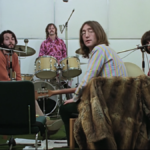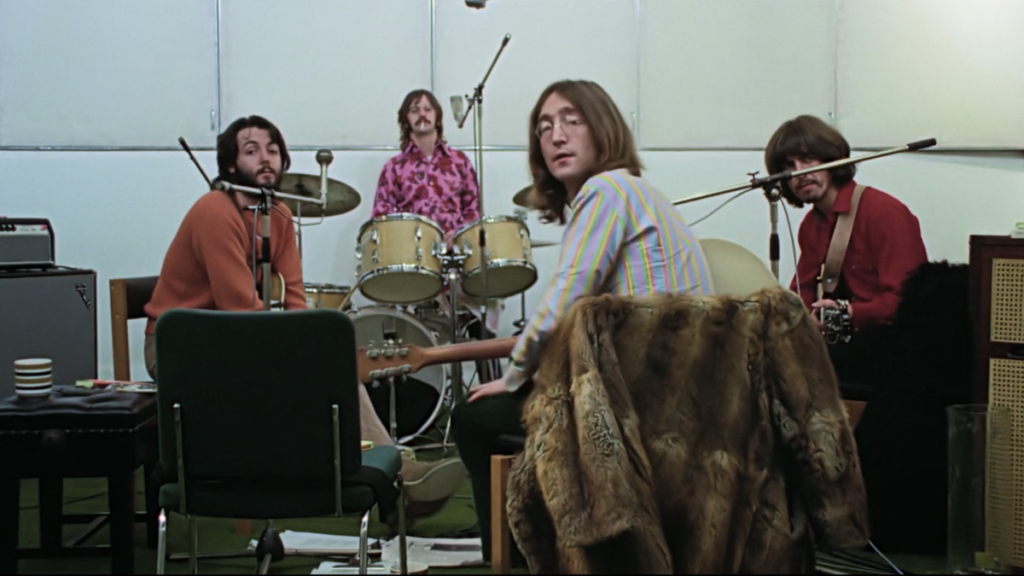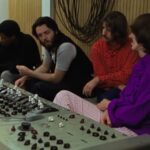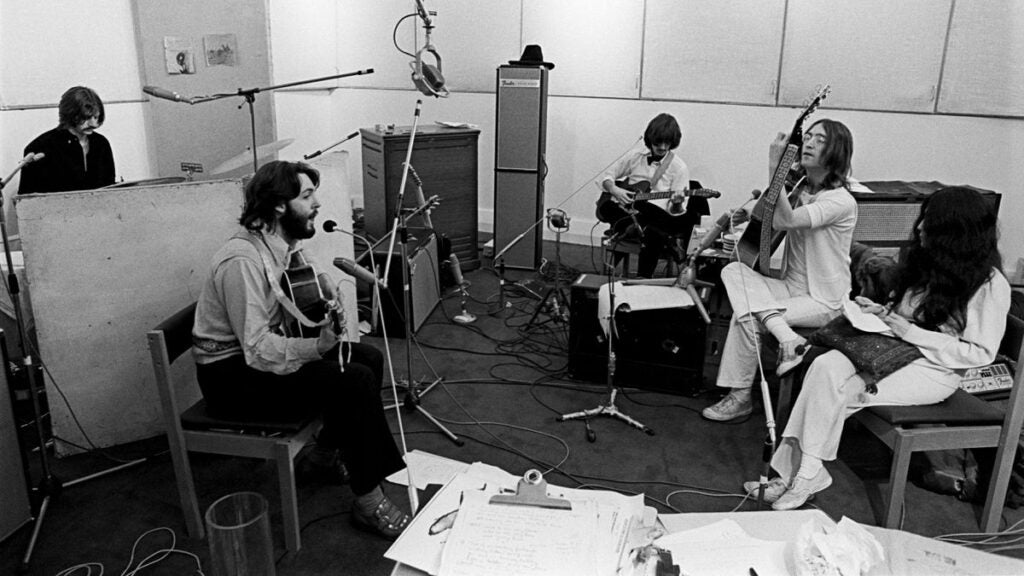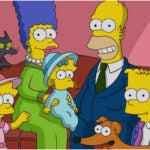Peter Jackson’s doc is must-see stuff for serious and casual fans alike
![]()
Linda McCartney/Apple Corps Ltd.
Chances are that you had a few extra guests over the Thanksgiving holiday – namely John Lennon, Paul McCartney, Ringo Starr and George Harrison. Peter Jackson’s “The Beatles: Get Back,” was a three-night Thanksgiving event on Disney+, one that featured previously unseen material from the lead-up to their last-ever live public performance, is astounding and eye-opening, an intimate portrait of larger-than-life creative titans.
“The Beatles: Get Back” is easily one of the premier television events of the year – and if you need some nudging in the direction of the Fab Four, well, here are all the reasons that you should make it appointment viewing.
It’s the First Beatles Television Event Since ‘Anthology’
Back in 1995, the Beatles commandeered the Thanksgiving television landscape with “The Beatles Anthology,” a three-night event on ABC that was also overseen by current Disney chairman Bob Iger. “The Beatles Anthology” was part of a transmedia event that also included three double albums featuring new Beatles songs (“Free as a Bird” is still a banger) and a lushly illustrated companion book.
Since then, there have been plenty of Beatles miscellanea (notably Ron Howard’s feature documentary “The Beatles: Eight Days a Week,” which captures the band at a much earlier point in their career) but nothing on the scale or scope of “The Beatles Anthology.”
Until now. Like the zeitgeist-capturing ”Anthology,” “The Beatles: Get Back” is something of a holy grail for both Beatles obsessives and casual fans alike. It isn’t as expansive as “Anthology,” which looked to chart the entire history of the band, but in the microcosm of the 22 days in which “Get Back” takes place, much can be discerned about the history of the band, where they find themselves at the time and what and who was to blame for their break-up a year later.
Also, at nearly eight hours, nothing since “The Beatles Anthology” has allowed you to luxuriate in the band to the same degree.
It’s a Technological Marvel
https://youtube.com/watch?v=AnVJJqXY7yw%3Ffeature%3Doembed
In 2018 Peter Jackson made “They Shall Not Grow Old,” a documentary that brought footage of World War I to life utilizing techniques like colorization and cutting-edge enhancements. And while “The Beatles: Get Back” doesn’t have to go to such extreme lengths (since there was no sound on the WWI footage, Jackson had to hire actors to voice the soldiers and put in all of the sound effects), it does use some of the technology to make things look and sound insanely wonderful.
For one, the footage has been cleaned up and enhanced. The original footage from early 1969, eventually utilized for the film “Let It Be” (released in May 1970 and directed by Michael Lindsay-Hogg), was shot on 16 mm and meant for a television special. For the theatrical presentation, they blew it up to 35 mm, a process that Paul, at the time, even worried about looking crummy. (Paul was right; it did.)
For “The Beatles: Get Back,” Jackson was able to take the original footage, polish it, and blow it up to a full 1.85:1 aspect ratio, creating an image that gloriously fills most widescreen TVs. What’s more, he used machine learning-based programs to separate the audio so that even in scenes where multiple conversations are going on or people are playing instruments or rattling around, he could isolate those voices and they come through in the final documentary crystal clear.
It’s pretty amazing, especially given the close quarters and somewhat rambling nature of the rehearsal time leading up to the immortal rooftop performance (more on that in a bit).
It Rewrites a Pivotal Piece of Beatles Lore
So much of “The Beatles: Get Back” feels like it is correcting an unfinished historical account. The original “Let It Be” movie was 80 minutes. Jackson was afforded more than 60 hours of never-before-seen footage (plus 150 hours of audio). Where the “Let It Be” film painted the band in a more contentious light, former creative giants who had grown tired of the process and each other, slinking toward twilight, “The Beatles: Get Back” allows more room for nuance.
For much of the new documentary’s eight-hour runtime, the band is joking around, goofily trying out songs and discussing what they are being filmed for (a movie? a TV special?). Wives and girlfriends and children show up and mingle with the band. Countless cigarettes are smoked. There is drama, for sure. You actually see George Harrison quit the group, and Paul and John discuss it later (thanks to a microphone that original director Michael Lindsay-Hogg had concealed in a flowerpot).
At the time, too, Lennon and Yoko Ono (who is seen throughout the documentary as a fairly benign presence) were heavily into heroin, a dependency that contributed to the band’s dissolution. While the drugs aren’t specifically commented on, there are moments when John is nodding off on camera, and he seems loopier than some of the other members. (It’s easy to imagine that drugs were discussed at some point during filming and it’s even easier to think that Disney probably shot that down quickly.)
In place of Yoko as the villain, a relatively obscure figure emerges: Allen Klein, who took over two years after the death of Brian Epstein (he died suddenly of a drug overdose in 1967 at the age of 32). Klein doesn’t make an appearance in the documentary, but Jackson has publicly stated that he blames Klein for the band’s break-up. Not only do you hear McCartney talk about how much he likes Yoko, but the way that Lennon speaks about Klein carries with it an almost apocalyptic weight. The end was near, maybe nearer than any of them thought.
It’s a Tantalizing Glimpse of the Potential Future of the Band
In a weird way, the recording of what would eventually become “Let It Be” (both the album and the movie) serves as a kind of nexus point for the band. From this point, there could have been countless futures for the Beatles, many of which were brought up during the recording and none of them came true. One of the more tantalizing ideas floated was to recruit Billy Preston, an amazingly musician who was helping them with their sound (and actually has a co-writing credit on the song “Get Back”), to officially become “the fifth Beatle.” (He is one of the highlights of the documentary.)
When Harrison leaves, the idea to recruit Eric Clapton to replace him is presented (hilariously Harrison’s wife at the time, Pattie Boyd, would later marry Clapton); Bob Dylan is also mentioned as a potential replacement. But the biggest “What If?” might be how almost everyone in the band (and associated with the band) didn’t see what would become “Let It Be” as their final album.
Yes, they were worn down by the typical album production cycle. But almost every band member talked about the future of the group – where they were going to go from here. And that unknown finality, knowing that we are watching the end of the band before they do, adds a level of poignancy.
You’ll See the Rooftop Performance Like Never Before
The climax of “The Beatles: Get Back” is the full rooftop performance that has arguably transcended music history and become one of the most iconic moments in pop culture — all 42 minutes of it. Since there were multiple cameras picking up the action (including one illegally positioned across from the Apple Corps building), Jackson goes into granular detail, cutting between the cameras on the rooftop, a hidden camera in the Apple lobby, and roving man-on-the-street interviews with people in the neighborhood who have very strong opinions on the Beatles interrupting their workday.
One of the most compelling aspects is the mini-narrative of a couple of bobbies, who look younger than the Beatles themselves (which is really saying something), who attempt to intervene and shut down the performance. (One cop hilariously suggests that, since it is a film, they could simply dub the audio in later.) It’s this interference that at least partially scrubs them performing on the roof for the rest of the day; the remainder of the recording was completed the following day in the studio.
Occasionally, Jackson will present every camera/angle at the same time, making a mosaic of Beatles footage that gives the performance even more life. It’s an absolute thrill. Even if you think you know everything about that rooftop performance and what it meant, nothing can compare to the almost microscopic detail that Jackson brings to it – the way that John shakes his hands to warm them off, the casual glint in Paul’s eyes after he notices the cops finally making their way to the roof, the way that Londoners react to hearing their favorite band on a random afternoon. It’s absolutely breathtaking and the perfect way to conclude the documentary, made all the more powerful by all of the footage you’d seen beforehand.
Source: Read Full Article


